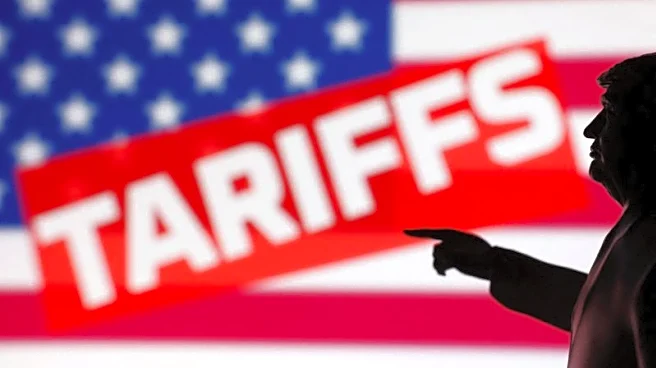What's Happening?
President Donald Trump has announced a new set of tariffs targeting heavy trucks, furniture, and pharmaceutical products, set to take effect on October 1. The tariffs include a 25% levy on heavy trucks, aimed at supporting domestic manufacturers like Peterbilt and Mack trucks. Additionally, kitchen cabinets and bathroom vanities will face a 50% tariff, while upholstered furniture will be taxed at 30%. Pharmaceutical products, particularly branded or patented ones, could see tariffs as high as 100%, although exemptions may apply to companies building manufacturing plants in the U.S. This move adds to the ongoing uncertainty in trade policy, as the U.S. continues negotiations with major trade partners and faces legal challenges over previous tariffs.
Why It's Important?
The imposition of these tariffs is significant as it could impact various sectors of the U.S. economy. The tariffs on trucks and furniture may lead to increased prices for consumers and could affect inflation, which is already on the rise. The pharmaceutical tariffs, although potentially exempting companies investing in U.S. manufacturing, could increase healthcare costs, affecting insurance prices and hospital expenses. This development could also strain international trade relations, particularly with countries like China, Canada, and the European Union, which are key players in the global supply chain. The tariffs may also influence domestic investment and growth, as businesses navigate the added costs and uncertainties.
What's Next?
As the tariffs take effect, stakeholders across industries are likely to respond. Pharmaceutical companies may accelerate their U.S. manufacturing plans to avoid tariffs, while furniture and truck manufacturers might seek cost-cutting measures to mitigate the impact. International trade partners may engage in further negotiations to address these tariffs, potentially leading to adjustments or retaliatory measures. Legal challenges could also arise, questioning the tariffs' compliance with existing trade agreements. The broader economic implications, including potential inflationary pressures and impacts on consumer spending, will be closely monitored by policymakers and economists.
Beyond the Headlines
The tariffs raise questions about the long-term strategy of reshoring manufacturing to the U.S. While intended to boost domestic production, the approach may face challenges such as increased costs and regulatory hurdles. The pharmaceutical sector, in particular, could see shifts in supply chain strategies, with companies balancing between domestic production and international partnerships. The move also highlights the complexities of global trade, where protectionist measures can have far-reaching consequences on international relations and economic stability.











